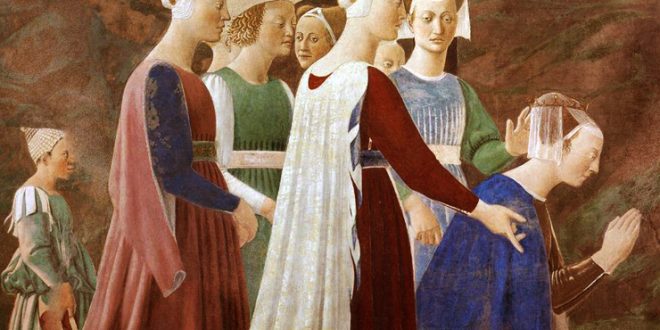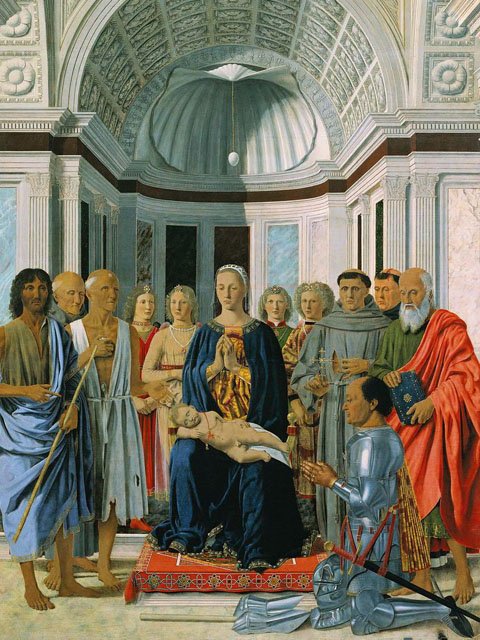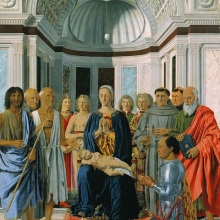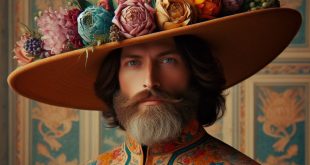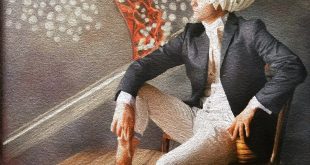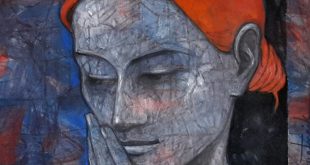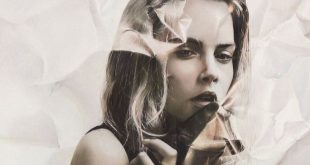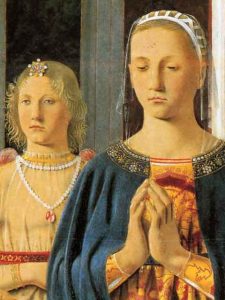 PURCHASING THE PAINTING PERSPECTIVE, LOOKING FOR THE MATHEMATICAL BASIS OF BEAUTY
PURCHASING THE PAINTING PERSPECTIVE, LOOKING FOR THE MATHEMATICAL BASIS OF BEAUTY
PIERO DELLA FRANCESCA 1/3 – One of his most famous and mysterious works (The flagellation of Christ) dates back to 1460. Born in Borgo Sansepolcro, he would become one of the artists of the Italian Renaissance. His works affect the use of perspective, as a result of precise geometric studies. After the pictorial apprenticeship in San Sepolcro moved to Florence, where he worked with Domenico Veneziano (artist who painted in a style poised between late Gothic and Renaissance). http://www.pierodellafrancesca.it/en-home.php For him, every aspect of visible reality responded to a rigorous mathematical order, an order that was revelation of the harmony of creation.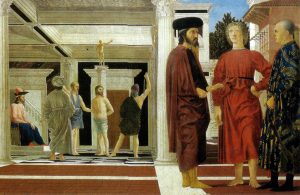
PIERO DELLA FRANCESCA 2/3 – His first official work could be the “Baptism of Christ” (now held in London at the National Gallery), a work probably carried out around 1439. In 1439 he was in Florence where, knowing the artistic styles of Masaccio and Paolo Uccello, he was artistically formed working with the painter Domenico Veneziano. All his work can be considered as a search for the right mathematical and geometric relationships, to define the correct spatial representation and the perfection of the forms represented. https://www.terredipiero.it/en/ It was an economic motive because of the fact that his works represent religious subjects, being commissioned.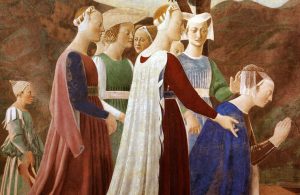
PIERO DELLA FRANCESCA 3/3 – He had been a guest of important Italian courts, where he had made works in Urbino and Ferrara, Arezzo and Rimini, Rome and Perugia. There is a geometric matrix that he applies to any form he paintes, as if he reduces any form of geometric solid forms to regular forms. http://www.valtiberinaintoscana.it/en/piero-della-francesca Representing the spirit that will give birth to the Renaissance, he was an artist and mathematician. Around 1470, he was the guest of the duke of Montefeltro in Urbino, where he made two of his most famous works (the Double portrait of the dukes of Urbino and the Pala di Brera). Thanks to prospective innovations and color games, he has been able to influence the subsequent Italian painting.
The intellectual property of the images that appear in this blog correspond to their authors. The sole purpose of this site, is to spread the knowledge of these artists and that other people enjoy their works.
 Meeting Benches World art in all forms
Meeting Benches World art in all forms
